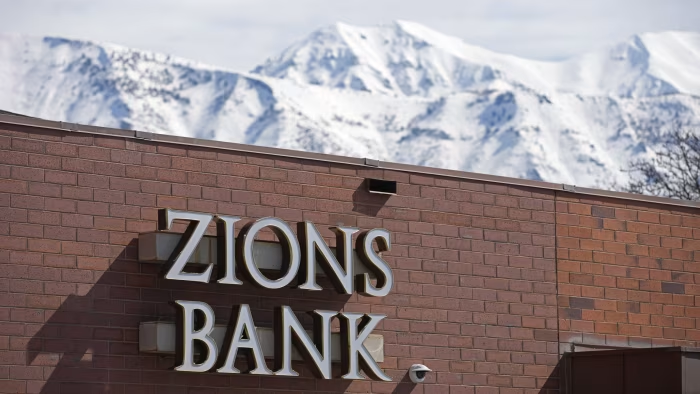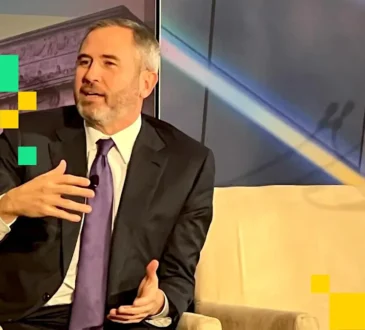
Unlock the Editor’s Digest for free
Roula Khalaf, Editor of the FT, selects her favourite stories in this weekly newsletter.
The writer is a senior fellow of the Hoover Institution and a professor of finance at Stanford Graduate School of Business
The latest disclosures from Arizona’s Western Alliance Bank and Utah’s Zions Bank aren’t “one-off cockroaches”. They’re a tell. When regional lenders surface multimillion-dollar losses tied to alleged borrower fraud after three years of rate-driven balance-sheet damage, it’s a reminder that big parts of US banking have been blinking red for a while.
This didn’t begin with fraud. It began with interest-rate risk. When the Federal Reserve tightened monetary policy in 2022, long-duration assets fell in value. My colleagues and I estimate that this resulted in roughly $2tn of unrealised losses through early 2023 — broadly equal to the banking system’s equity buffer. US banks had roughly $9tn in uninsured deposits — pure flight risk when doubts rise. That’s how you get solvency runs even on liquid assets: rates jump, asset values fall, uninsured money runs, and losses that were “unrealised” suddenly become real. Silicon Valley Bank alone saw $42bn withdrawn in hours and an additional $100bn queued for the next day.
The correct policy pivot would have been to restructure the weak and recapitalise the viable. Some banks needed consolidation or resolution, and others needed to raise common equity. Instead, Washington rolled out the big hoses. The Fed’s Bank Term Funding Program (BTFP), backed by $25bn in Treasury credit protection, and a surge in Federal Home Loan Bank (FHLB) advances that peaked at more than $1tn, treated insolvency as if it were a short-term liquidity hiccup.
The message was clear: government liquidity would cover capital shortfalls. That stabilises headlines but invites the oldest response in banking: gambling for resurrection.
When the state cushions deposit flight, the marginal loan looks free. No one should be surprised when these loans prove imprudent. The newest revelations at regional banks are simply the next manifestation.
If this sounds obvious — gravity points downwards — it is. Yet our regulatory reflex since 2008 has been to add complexity and discretion rather than fix the core design. Supervisors rotate, standards wobble, and enforcement timing becomes a coin toss. In the dual-charter system, the same bank can be treated differently by state and federal teams, the former being demonstrably more lenient. Delay is how small problems become large ones. This is precisely why the lever that works isn’t more complexity — it’s more equity.
Meanwhile, the “Basel Endgame” measures meant to lift big-bank requirements are being reopened, with industry-friendly rewrites likely pushing finalisation into early 2026. Some simplification is healthy; Endgame chiefly tweaks risk-weight capital for large banks and doesn’t fix interest rate risk in banking or uninsured deposit runs, so reopening it to lower effective capital is the wrong call. Lower capital across a system still carrying rate-cycle scars misreads the moment.
Here is the uncomfortable arithmetic policymakers keep wishing away. US banks fund risky, duration-sensitive portfolios with extremely thin equity cushions. Non-bank lenders carry several times more equity, and unsurprisingly, they run less. Raising common equity needn’t choke credit — it reroutes it: banks can sell loans instead of keeping them on the balance sheet, and non-banks can step in. And where costs do rise at the margin, research shows these are modest and outweighed by the benefits of fewer crises.
The remedy is straightforward: start with the solvency test that actually matters. Mark risk realistically and assume a plausible uninsured-deposit run. For viable franchises, enforce capital raises. Simplify the rule book around capital, use discretion sparingly, and establish thresholds that restrict payouts and, if needed, trigger resolution. Streamline the system so the same institution isn’t playing rule book roulette depending on who shows up to examine it. And stop subsidising short-term, run-able funding. If you’re going to guarantee it in practice, price it explicitly, and pair that with higher equity so the guarantee isn’t a free option.
Will all this feel costly to bank shareholders? Of course. That’s the point. Losses belong with risk-takers, not taxpayers. The alternative is the cycle we’re in: declare victory because “contagion” didn’t happen, then, once the political heat fades, discover the risks banks took while the safety net was out.
The US can keep pretending complex regulation will make thinly capitalised banks safe, or it can fix the design — by requiring much higher common equity and resolving the weak. Banking isn’t exempt from physics. We can wish gravity pointed up. It never does.



